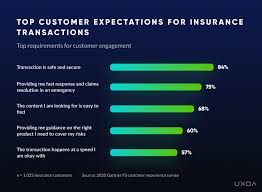In the rapidly evolving insurance landscape, insurtech is emerging as a game-changer, significantly enhancing customer experience through innovative solutions. By integrating cutting-edge technologies, insurtech is transforming traditional insurance practices, making interactions more efficient, personalized, and secure. This article explores how insurtech is revolutionizing customer experience in the insurance industry, highlighting key innovations and trends.
Streamlining Claims Processes
One of the most notable advancements driven by insurtech is the streamlining of claims processes. Traditionally, handling insurance claims has been a slow and cumbersome task, often resulting in customer dissatisfaction. Insurtech companies are revolutionizing this by employing automation and artificial intelligence (AI) to expedite the process.
AI-powered chatbots, for instance, can now manage initial claims inquiries, provide instant support, and guide customers through the claims process. This reduces wait times and minimizes human error. Machine learning algorithms further enhance this by analyzing large volumes of claims data to identify patterns, predict outcomes, and expedite claim resolutions. These technological improvements not only accelerate the claims process but also ensure a more accurate and satisfactory experience for customers. With quicker resolutions and efficient processing, customers experience less frustration and greater convenience.
Personalizing Insurance Products
Insurtech is also making significant strides in personalizing insurance products to better meet individual customer needs. Traditional insurance policies often operate on a one-size-fits-all basis, which can lead to customers feeling their needs are not fully addressed. Insurtech is changing this by leveraging big data and analytics to tailor insurance products more closely to individual preferences and behaviors.
Usage-based insurance (UBI) is a prime example of this trend. By utilizing telematics data, insurers can adjust premiums based on real-time driving habits. This means safer drivers benefit from lower premiums, while those with riskier driving patterns face higher rates, making the pricing model more equitable. Additionally, insurtech platforms analyze customer data to offer personalized coverage options, ensuring that each policy aligns with the unique needs and circumstances of the individual. This personalization enhances customer satisfaction by providing more relevant and targeted insurance solutions.
Enhancing Customer Engagement through Digital Platforms
The shift towards digital platforms is another significant trend in insurtech, greatly enhancing customer engagement. Mobile apps and online portals have become indispensable tools for insurers, offering customers easy access to their policies, claims, and support services.
These digital platforms allow users to manage their insurance needs anytime and anywhere, providing a level of convenience that was previously unattainable. Through these platforms, customers can quickly check their policy details, submit claims, and communicate with their insurers in real-time. This instant access to services not only improves efficiency but also fosters a more proactive relationship between insurers and customers. Enhanced digital engagement translates to higher customer satisfaction and loyalty, as customers appreciate the ease of managing their insurance needs through user-friendly interfaces.

Leveraging Blockchain for Transparency and Security
Blockchain technology is emerging as a transformative force in the insurtech sector, offering enhanced transparency and security. By creating immutable records of transactions and policy agreements, blockchain reduces the risk of fraud and ensures data integrity.
For customers, blockchain provides greater trust in the insurance process by guaranteeing that all interactions are transparent and verifiable. Each transaction is recorded on a decentralized ledger, making it nearly impossible to alter or falsify information. This technology also simplifies the verification process, as customers can easily access and review their policy details and claims history. As blockchain technology continues to advance, its applications in insurance are expected to grow, further strengthening customer trust and security.
The Future of Insurtech: Innovations on the Horizon
As insurtech continues to evolve, several emerging technologies are poised to further enhance customer experiences. Augmented reality (AR) and virtual reality (VR) are among the most promising innovations, offering new ways for insurers to interact with their clients.
AR can be used to create immersive experiences for virtual policy reviews or claim assessments, allowing customers to visualize their coverage in a more interactive way. For example, AR applications might enable users to see how different coverage options impact their financial situation in real-time. VR, on the other hand, can simulate various insurance scenarios for training and educational purposes, providing a more engaging and informative experience.
These technologies not only enhance customer engagement but also offer insurers new methods for educating clients about their policies and coverage options. As AR and VR become more integrated into the insurance industry, they will offer more interactive and dynamic ways to connect with customers, further improving the overall experience.
To read more articles like this click here.

